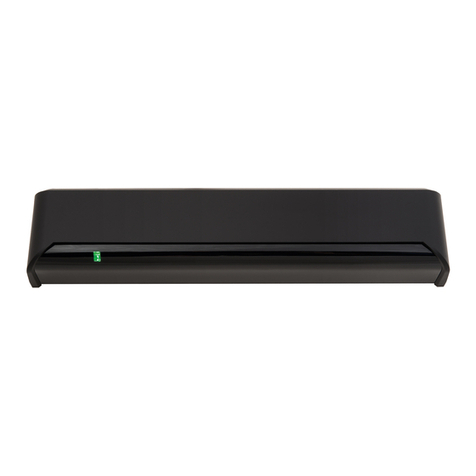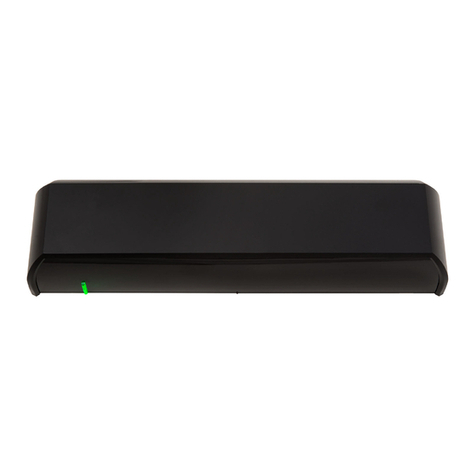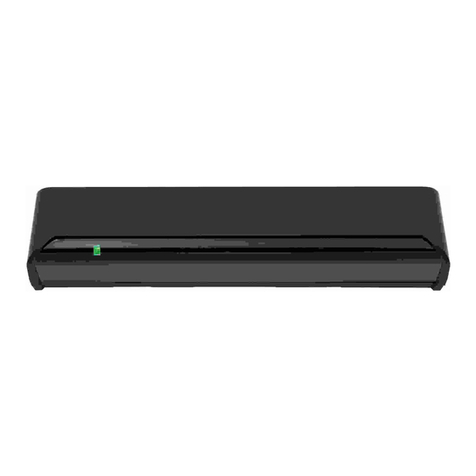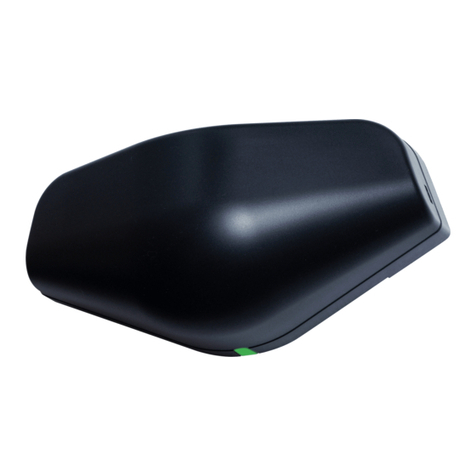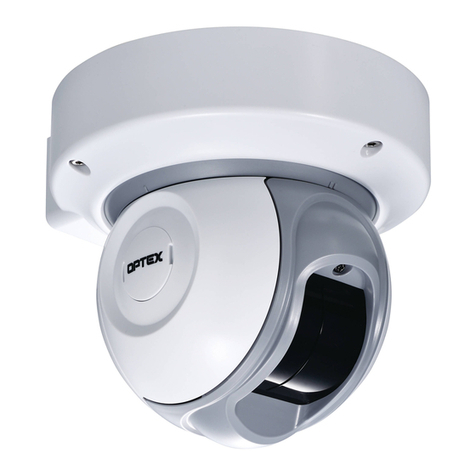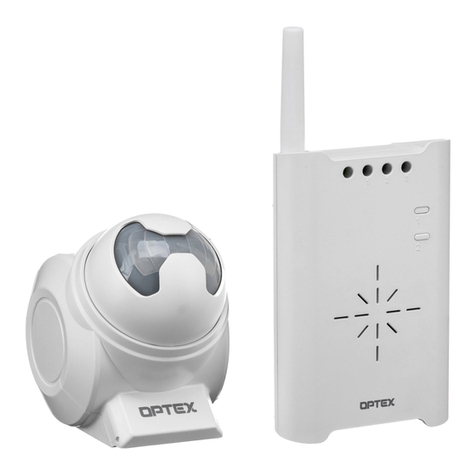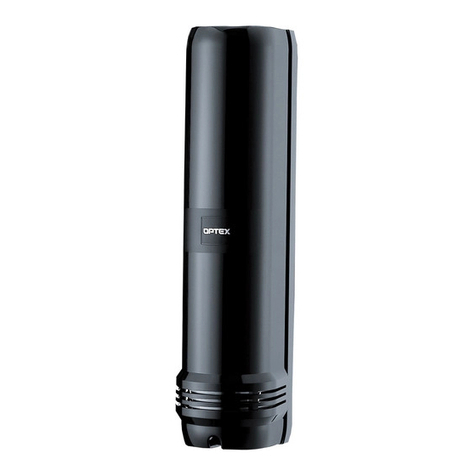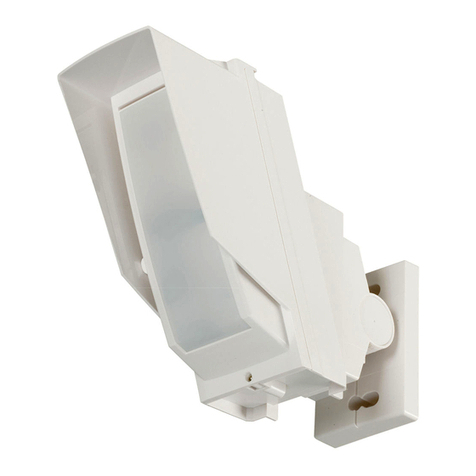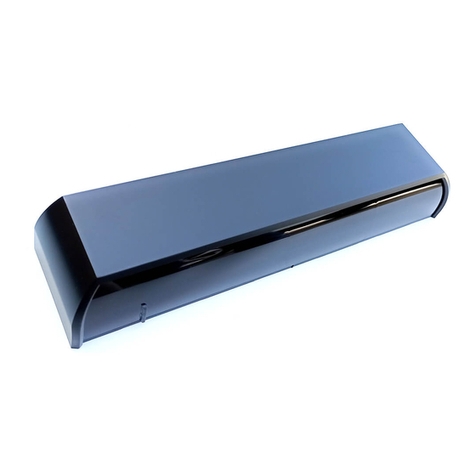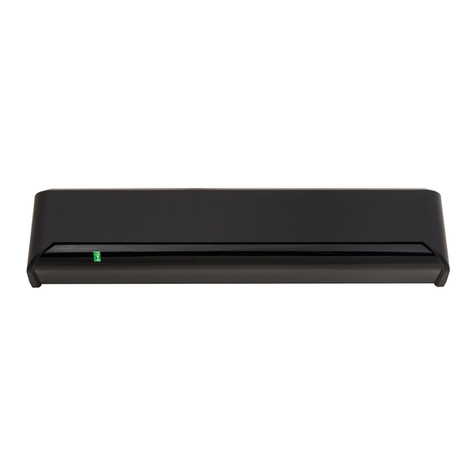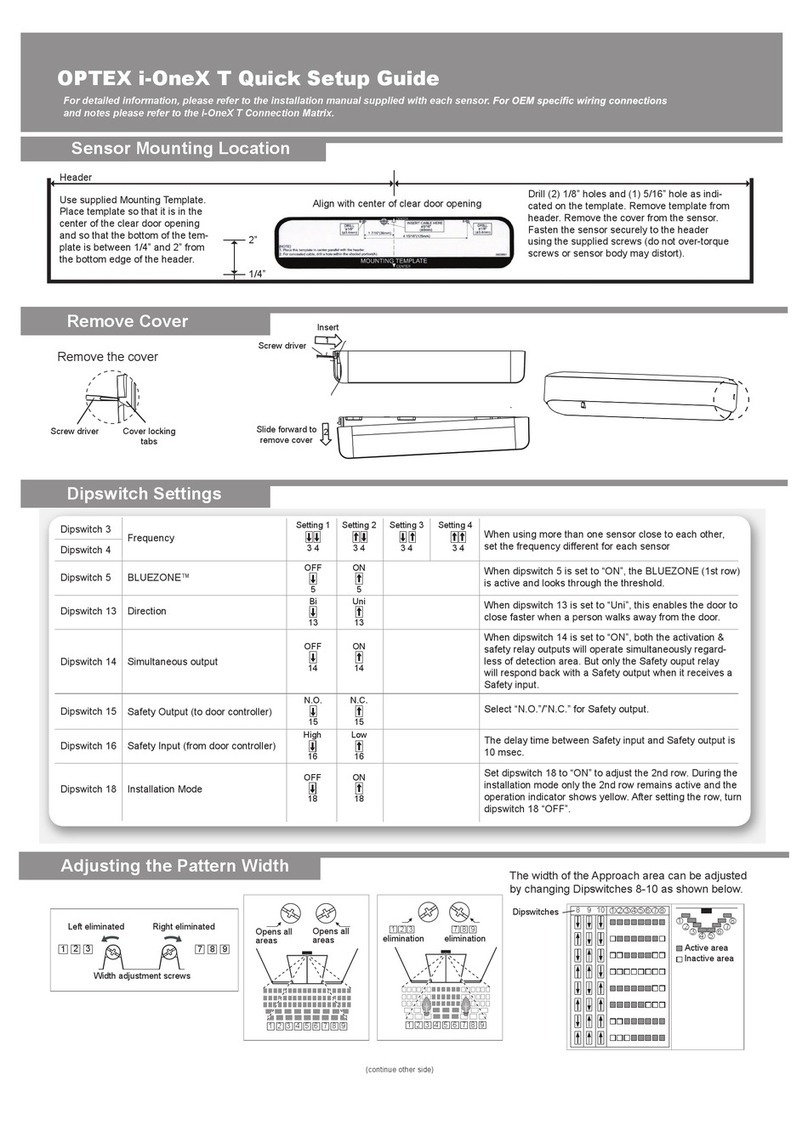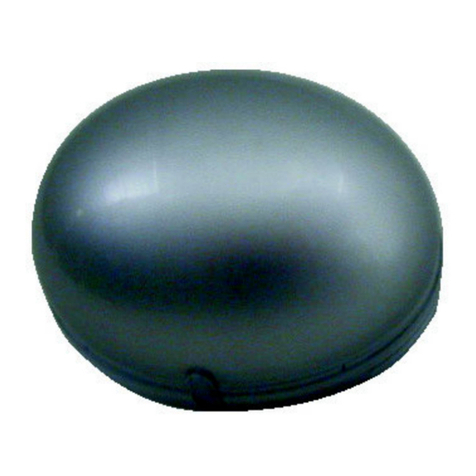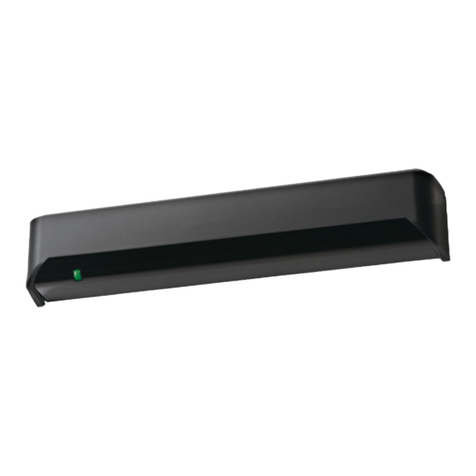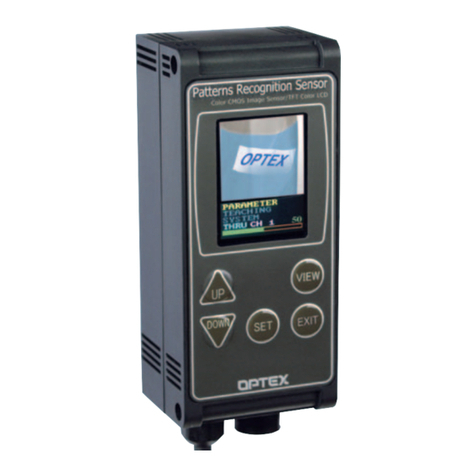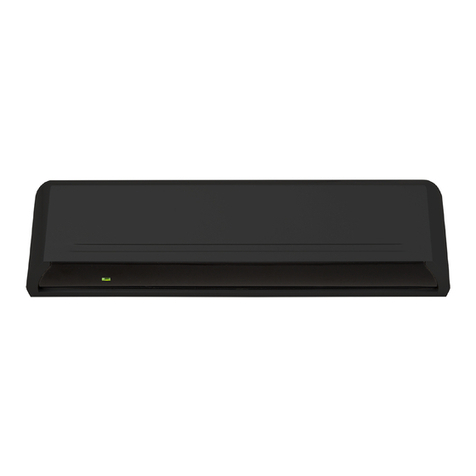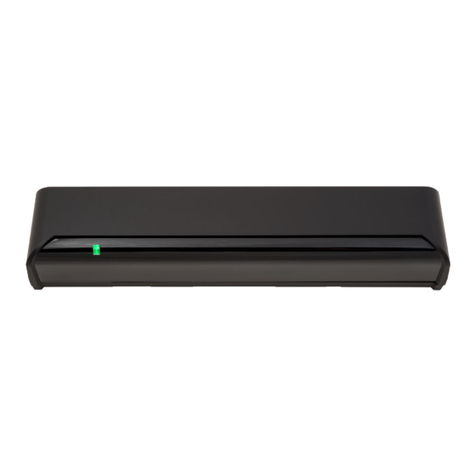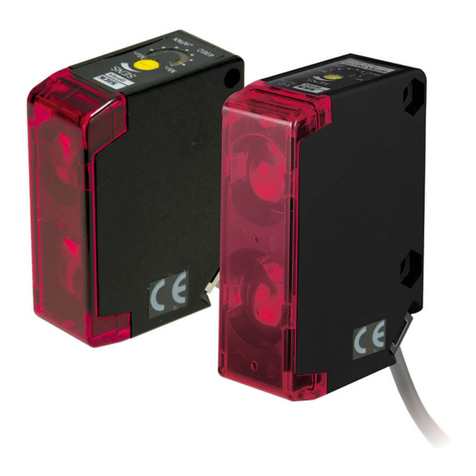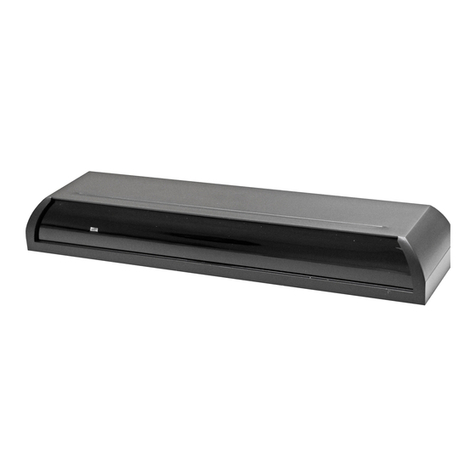
Narrow lens
2
1
ADJUSTMENTS
Red
Area depth angle adjustment Area adjustment tool
A
B
Area width adjustment
Blue
Depth angle adjustment screw
for the AIR area Depth angle adjustment screw
for the microwave area
Use the area adjustment tool (A) as shown above
to change the area depth angle.
3
1-1AIR adjustment
2-1 AIR adjustment
1-2 Microwave adjustment
Depth angle
adjustment screw
Shallow Deep
Check the operation in the operation mode according to the chart below.
Dipswitch settings
When adjusting the 2nd row close to the door,
follow Table1 dipswitch16 for the easier adjustment.
1. Always keep the detection window clean. If dirty, wipe the window with a damp cloth. Do not use any cleaner / solvent.
2. Do not wash the sensor with water.
3. Do not disassemble, rebuild or repair the sensor yourself, otherwise an electric shock may occur.
4. When the operation indicator blinks green, contact your installer or service engineer.
5. Always contact your installer or service engineer when changing the settings.
6. Do not paint the detection window.
WARNING
1. When turning the power ON, always walk-test the detection area to ensure the proper operation.
2. Do not place any objects that move or emit light in the detection area. (e.g. plant, illumination, etc.)
Make sure that the detection area does not overlap with the door / header, and there is no highly reflecting
object near the detection area otherwise ghosting / signal saturation may occur.
NOTE
NOTE
NOTE
4
CHECKING
INFORM BUILDING OWNER / OPERATOR OF THE FOLLOWING ITEMS
Shallow Deep
Front view
[mm(feet,inch)]
0
0
1 2 3 4 5 6 7 89 10 11 12
When setting the detection area width, make sure to turn
the adjustment screws until it clicks.
cannot be eliminated separately, neither can
1 2 3 10 11 12
Width adjustment screws
Narrow
Wide
Eliminated
Eliminated Eliminated
Eliminated
1 2 3 10 11 12
To adjust the AIR detection area width, use the
adjustment screws as shown in the picture below.
2-2 Microwave adjustment
Use the area adjustment tool (B) as shown above
to change the area depth angle.
ShallowDeep
To adjust the microwave detection area width, use the
narrow lens referring to the following procedures.
For detection area, See DETECTION AREA in the front
page.
L H
H
L
02000
(6′6")
3000
(9′10")
3000
(9′10")
1000
(3′3")
2000
(6′6")
1000
(3′3")
2000
(6′6")
1000
(3′3")
3000
(9′10")
0
Top view
H
L
[mm(feet,inch)]
Mounting height : 2.2m (7'2")
Vertical adjustment : +35°
Wide area
Narrow area
AIR settings Microwave settings Other settings
Contact your installer or service engineer.
Sensor failure
Wrong wiring or connection failure. Check the wires and connector.
Wrong wiring or connection failure. Check the wiring.
Door operation Operation
indicator Possible cause Possible countermeasures
None Wrong power supply voltage. Set to the stated voltage.
Wrong wiring or connection failure.
Fast
green
blinking
Dirty detection window Wipe the detection window with a damp cloth.
Do not use any cleaner or solvent.
Sensitivity is too low. Set the sensitivity higher.
Set AIR area width to "wide".
The detection area overlaps with
the door / header.
Adjust the detection area to "deep".
Door opens
when no one
is in the
detection area.
(ghosting)
Unstable
Door remains
open
Sudden change in the detection area Check Table1 dipswitch 1 to 4.
If the problem still persists, hard-reset the
sensor.(Turn the power OFF and ON again)
Slow
green
blinking
Check the wires and connector.
Remove highly reflecting objects from the detection
area or lower the sensitivity or change the area
depth angle for AIR area.
Door does not
open when a
person enters
the detection
area.
Unstable Wrong detection area positioning. Check ADJUSTMENTS 1, 2 ,3 & 4.
Sensitivity is too low. Set the sensitivity higher.
Short presence timer. Set the presence timer longer.
Proper
Proper
Dirty detection window. Wipe the detection window with a damp cloth.
Do not use any cleaner or solvent.
TROUBLESHOOTING
Proper
operation
Others Set
dipswitch 11 to ON.
Waterdrops on the detection window.
The detection area overlaps with
another sensor.
Detection area overlaps with door /
header.
Check Table1 dipswitch 5, 6.
Objects that move or
emit light in the detection area.
Remove the objects.
Sensitivity is too high. Set the sensitivity lower.
Installation mode is set to ON. Set dipswitch 16 to OFF.
Yellow
Signal saturation (AIR)
Set dipswitch 7 and / or dipswitch 8 to ON.Raining or snowing(AIR)
Set dipswitch 9 and / or dipswitch 11 to ON.Raining or snowing(Microwave)
Table1
Adjust the microwave detection area with potentiometer.
Turning it clockwise increases the sensitivity and turning
counterclockwise lowers the sensitivity.
ShallowDeep
2000
(6′6")
2000
(6′6")
1000
(3′3")
1000
(3′3")
3000
(9′10")
2000
(6′6")
2000
(6′6")
3000
(9′10")
2000
(6′6")
3000
(9′10")
2000
(6′6") 1000
(3′3")
2000
(6′6") 1000
(3′3")
00
00
[mm(feet,inch)] [mm(feet,inch)]
Wipe the detection window with a damp cloth.
Use the rain-cover (Separately available).
All rows have the presence detection
function.
The presence timer can be selected from
4 settings.
When using more than two sensors close
to each other, set the frequency different
for each sensor.
When dipswitch 9 is set to uni-directional,
this setting enables the door to close
earlier when a person walks away from
the door.
When dipswitch 10 is set to ON, a person
wavering in the activation detection area
can be detected. This is only effective
when dipswitch 9 is set to uni-directional.
Set dipswitch 11 to ON when the sensor
operates by itself (ghosting).
When dipswitch 11 is set to ON the actual
detection area may occur smaller.
When dipswitch 13 is ON, the sensor
outputs safety and activation simultane-
ously.
When dipswitch 15 is set to ON, the blue
-zone (1st row) is active and looks
through the threshold.
Set dipswitch 16 to ON to adjust the 2nd
row. After setting the row switch dipswitch
16 OFF. During the installation mode only
the 2nd row remains active and the
operation indicator shows yellow.
Presence timer
Frequency
43 43 43 43
600sec
180sec
60sec
30sec
65 65 65 65
Setting1 Setting4
Setting3
Setting2
Snow mode
Normal Rain
Normal Snow
Bi Uni
OFF ON
OFF ON
Rain mode
Direction
Auto caution
Immunity
For future use
Safety Safety +
Activation
AIR output
For future use
OFF ON
Blue-zone
OFF ON
Installation mode
7
8 8
9 9
10 10
11 11
13 13
15 15
16 16
7
Function
Dipswitch
1
Dipswitch
2
Dipswitch
3
Dipswitch
4
Dipswitch
5
Dipswitch
6
Dipswitch
7
Dipswitch
8
Dipswitch
9
Dipswitch
10
Dipswitch
11
Dipswitch
12
Dipswitch
13
Dipswitch
14
Dipswitch
15
Dipswitch
16
Set the sensitivity according to the
mounting height. Values below dipswitch
are reference only.
Setting
21 21 21 21
Low Middle High S-High
Sensitivity
Comment
2.0 to 3.0m 2.0 to 3.0m 2.5 to 3.2m 3.0 to 3.5m
Microwave sensitivity
Adjust the detection area (AIR or Microwave) to
"deep".
Or set dipswitch 11 to ON.
Status
Green
Motion
detection active
Red Blinking Blue
Motion/Presence
detection active
Entry Outside of
detection
area
Entry into
microwave area
Entry into
3rd row
Entry into
2nd row
Entry into
blue-zone
(1st row)
Orange Red
Stand-by
Operation indicator
④White Str. : COM.
⑤Yellow Str. : N.O.
⑥Green Str. : N.C.
①White : COM.
②Yellow : N.O.
③Green : N.C.
Power OFF
-
None
Safety
13
Safety
&
Activation
13
FCC WARNING(For USA)
Changes or modifications not expressly approved by the party responsible for compliance could void the
user's authority to operate the equipment.
IC(For CANADA)
Operation is subject to the following two conditions:
(1) this device may not cause interference, and
(2) this device must accept any interference received, indluding interference that may cause undesired operation of
the device.
This equipment has been tested and found to comply with the limits for a Class B digital device, pursuant to part 15 of
the FCC Rules. These limits are designed to provide reasonable protection against harmful interference in a residential
installation.This equipment generates, uses and can radiate radio frequency energy and, if not installed and used in
accordance with the instructions, may cause harmful interference to radio communications. However, there is no
guarantee that interference will not occur in a particular installation. If this equipment does cause harmful interference
to radio or television reception, which can be determined by turning the equipment off and on, the user is encouraged
to try to correct the interference by one or more of the following measures:
-Reorient or relocate the receiving antenna
-Increase the separation between the equipment and receiver.
-Connect the equipment into an outlet on a circuit different from that to which the receiver is connected.
-Consult the dealer or an experienced radio/TV technician for help.
1.The antennas cannot be exchanged.
2.To comply with FCC RF exposure compliance requirements, aseparation distance of at least 20cm must be
maintained between the antenna of this device and all persons.
-NOTICE-
-NOTICE-
Safety
output
Activation
output
Safety
output
Activation
output
Set this switch to Rain if the sensor is
used in a region with a lot of rain.
Set this switch to Snow if the sensor is
used in a region with snow or a lot of
insects.
OPTEX Co.,LTD.
Manufacturer
5-8-12 Ogoto Otsu 520-0101, Japan
TEL.: +81(0)77-579-8700
FAX.: +81(0)77-579-7030
WEBSITE:
www.optex.co.jp/as/eng/index.html
East coast office
8510 McAlpines Park Drive, Suite 108
Charlotte, NC 28211 U.S.A.
TEL.: +1-800-877-6656
FAX.: +1(704)365-0818
WEBSITE: www.optextechnologies.com
OPTEX Technologies Inc.
Corporate Headquarters
North and South America Subsidiary
3882 Del Amo Blvd., Suite 604
Torrance, CA 90503 U.S.A.
TEL.: +1-800-877-6656
FAX.: +1(310)214-8655
WEBSITE: www.optextechnologies.com
: Detection
: Non-Detection
Detection
area
Bi-direction(Bi)
Bi-direction
Uni-direction(Uni)
Uni-direction with Auto caution mode
When Dipswitch 9 is set to Bi, Bi-direction
mode is effective, regardless of Dipswitch
10 setting.
Bi UniOFF
ON
9 910
10
Bi
9
Uni
9
OFF
10
ON
10
Sensor
Door
*Please refer to
Table 2
for the
details.
Table 2
3
4
1.Remove screw
2.Press with thumbs
and lift detection
window up.
4. Push it until it clicks.
3. Set narrow lens in
front of antenna.
